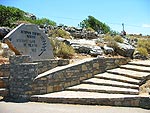 |
The Milatos cave is situated 15
km east of Malia on the slope of the Kastellos mountain. |
|
A path along the edge of the
gorge leads to the cave.
|
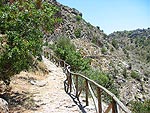
|
| In February 1823, more than
2.000 women and children hid in the cave together with 150 armed men to
avoid the devastating attack by Hassan Pasha and his troops, but a Turk
from Voulismeni (near Neapoli) betrayed them.
|
| Hassan Pasha therefore sent
5.000 men lead by Hussein Bey to the cave where they were met by fierce
resistance. After two weeks of siege and heavy fire, the trapped Cretans
were forced to surrender and were - despite the promise of safe passage -
all executed.
|
| In 1935 a chapel dedicated to
St. Thomas the Apostle was built in the right chamber of the cave in
memory of the tragic event. |
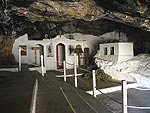
|
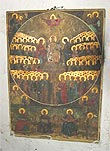 |
To the right of the chapel is a
bone-house where the bones of many of the killed are kept. The event is
celebrated on the Sunday of St. Thomas (Sunday after Easter). |
| Icon from the chapel
|
|
|
|
|
|
|
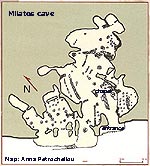
|
| The cave is also
geological quite interesting with its many "columns" of united
stalagmites and stalactites.
|
| The 2.100 m2 big
cave has eight openings into the gorge spread
out over 45 m. It is 73 m long and its maximum depth is 63 m while its
room height varies from 0,5 - 3 m.
|
| The cave is divided
into three parts:
|
|
| From the main entrance you
reach the central part which is by far the largest. At first the ceiling
is so low in many places that you must be very careful not to bump your
head into irregularities in it. |
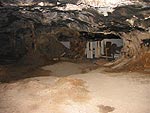
|
| In the right part stands the
St. Thomas chapel. This is the only part of the cave consisting of only
one chamber.
|
|
| The left part of the cave is
with its six openings quite well lit-up by daylight. There are many
"columns" here, dividing it into several smaller rooms and
passages. |
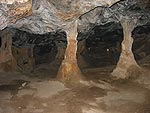
|
|
|
|
|

